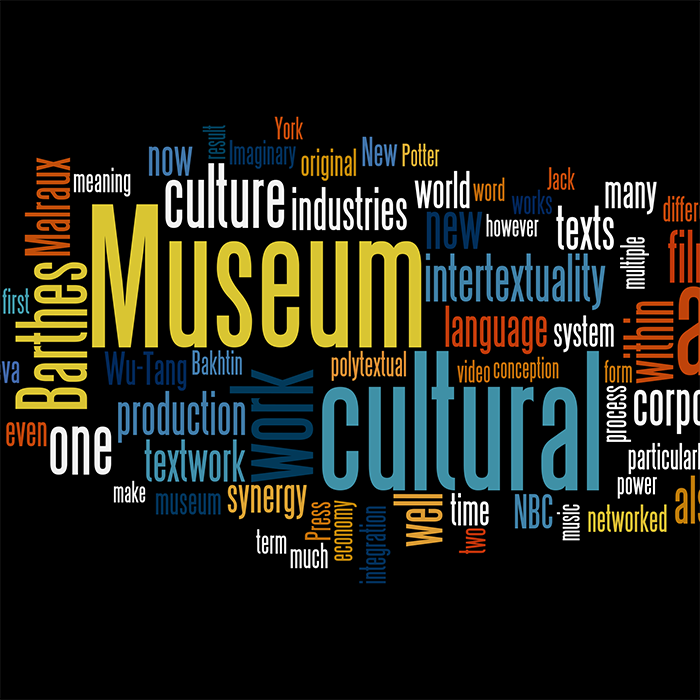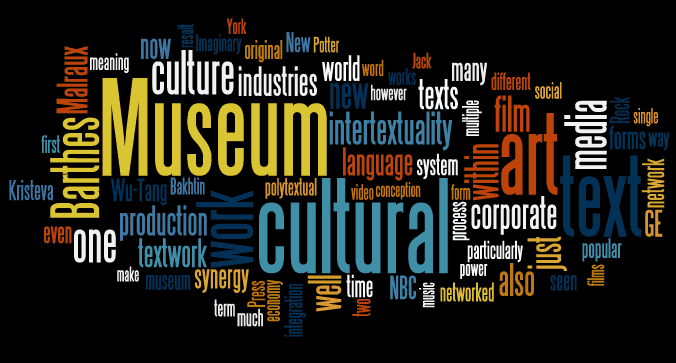deWaard, Andrew. The Museum: Textworks, Cultural Economy, and Polytextual Dispersion. MA Thesis, University of British Columbia, 2009. cIRcle: UBC’s Information Repository. [ubc library page] [full text pdf]
Abstract: The Museum is a theoretical model that aims to render a media-saturated world in which our media have become saturated with media. Corporate conglomeration of the cultural industries has transformed the production and circulation of art; the Museum captures the inter-related complexities of this development in which the notion of a singular text breaks down in the wake of synergistic proliferation. Conceiving of this ‘new society’ requires new conceptions: a model (the Museum), a language (polytextuality), a discipline (cultural economy), and a product (the textwork). Section I establishes the ‘Geography of the Museum’, starting with its chief architect, André Malraux, who designs the neo-aesthetic foundation of the ‘Imaginary Museum’ (Chapter Three). The post-structural blueprints are then drawn up by Mikhail Bakhtin and Julia Kristeva, giving the Museum its polytextual essence (Chapter Four). The Museum is then physically erected by the conglomerated cultural industries, transforming the Imaginary Museum into a material consumer experience (Chapter Five). Section II turns to the ‘Display of the Museum’, cataloguing the different ways in which art manifests itself within the Museum. By way of Roland Barthes, the textwork is theorized, a dialogical designation for the type of networked cultural output that now dominates popular culture (Chapter Seven). Case studies of particularly illuminating textworks are then presented, illustrating the polytextual content of the Museum in a multitude of intersecting forms and mediums. A decisively polytextual museum exhibition, “KRAZY! The Delirious World of Anime + Comics + Video Games + Art”, as well as two films – Children of Men and V for Vendetta – are seen as literal embodiments of the Museum (Chapter Eight). The next textwork is concerned with intermedial structure, and focuses on the Wu-Tang Clan’s interpolation of certain cinematic genres, as well as other mediums (Chapter Nine). The final textwork is General Electric, the world’s largest conglomerate. Transformers and 30 Rock, two very different GE products, both explicitly exhibit corporate synergy through polytextuality (Chapter Ten). Over-arching cultural shifts are demonstrated by the Museum: access over ownership, circulation over distribution, dialogue over delivery, digital social text over authorship, and multiple over singular.




